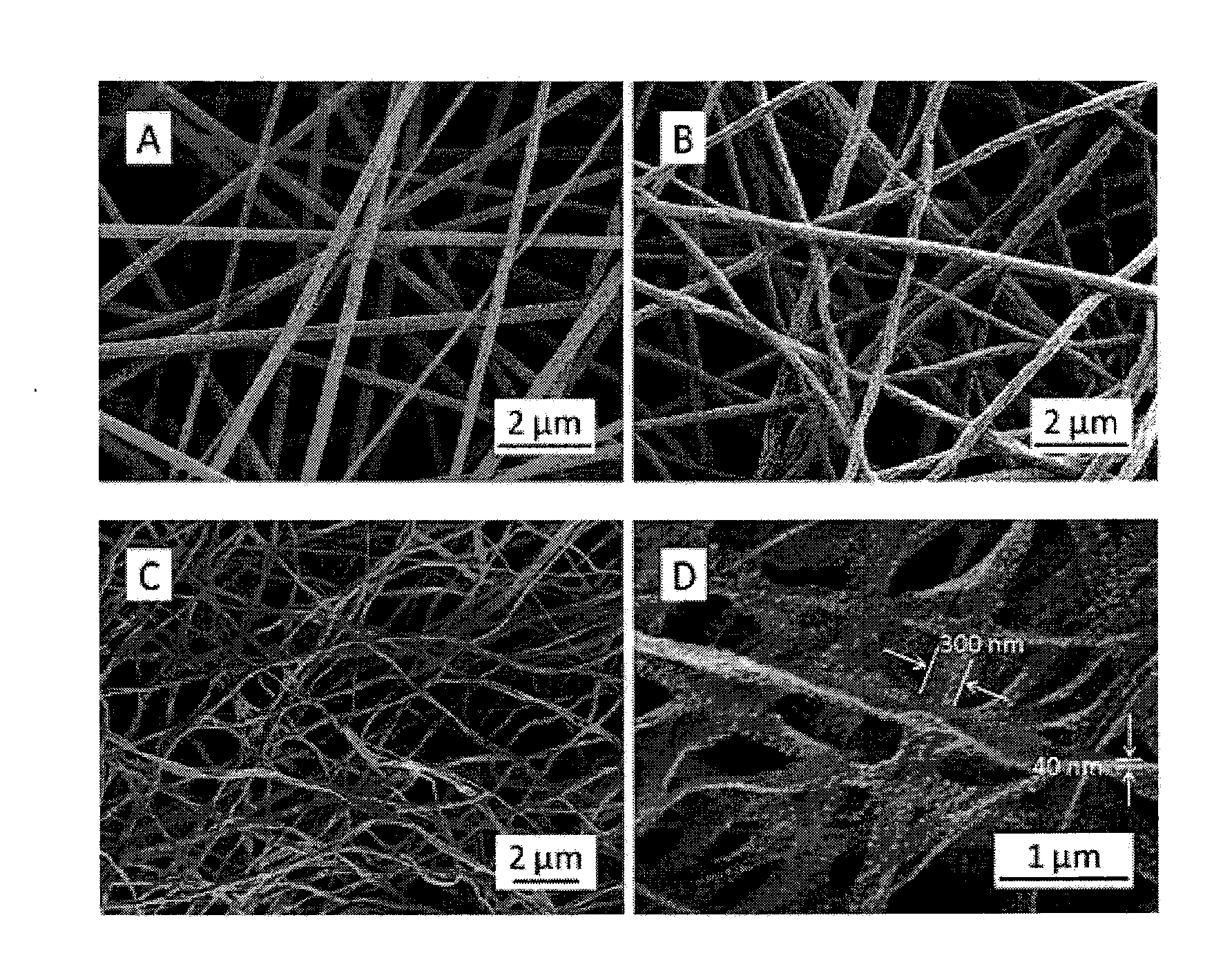Mechanically Resilient Titanium Carbide (TIC) Nano-Fibrous Felts Consisting of Continuous Nanofibers or Nano-Ribbons with TIC Crystallites Embedded in Carbon Matrix Prepared via Electrospining Followed by Carbothermal Reduction
- Summary
- Abstract
- Description
- Claims
- Application Information
AI Technical Summary
Benefits of technology
Problems solved by technology
Method used
Image
Examples
Example
DETAILED DESCRIPTION OF THE DRAWINGS
(a) Theory of the Invention:
[0046]In accordance with the present invention, continuous nanofibers or nano-ribbons with TiC crystallites embedded in carbon matrix have been synthesized via electrospinning followed by pyrolysis (i.e., carbothermal reduction). These nanofibers can be further treated with Cl2 gas to be converted into TiC-CDC nanofibers.
[0047]In one preferred aspect, the present method was performed and demonstrated that electrospinning of a spin dope containing titanium(IV) n-butoxide (TiBO, Aldrich catalogue number 244112) and furfuryl alcohol (FA, Aldrich catalogue number 185930) resulted in nanofibers having a uniform dispersion of titanium and carbon sources. The carbothermal reduction of these nanofibers then resulted in continuous nanofibers with TiC crystallites embedded in carbon matrix. These nanofibers were overlayed onto one another, resulting in a mechanically resilient nano-felt having excellent electrochemical properties...
PUM
| Property | Measurement | Unit |
|---|---|---|
| Temperature | aaaaa | aaaaa |
| Temperature | aaaaa | aaaaa |
| Temperature | aaaaa | aaaaa |
Abstract
Description
Claims
Application Information
 Login to View More
Login to View More - R&D
- Intellectual Property
- Life Sciences
- Materials
- Tech Scout
- Unparalleled Data Quality
- Higher Quality Content
- 60% Fewer Hallucinations
Browse by: Latest US Patents, China's latest patents, Technical Efficacy Thesaurus, Application Domain, Technology Topic, Popular Technical Reports.
© 2025 PatSnap. All rights reserved.Legal|Privacy policy|Modern Slavery Act Transparency Statement|Sitemap|About US| Contact US: help@patsnap.com



